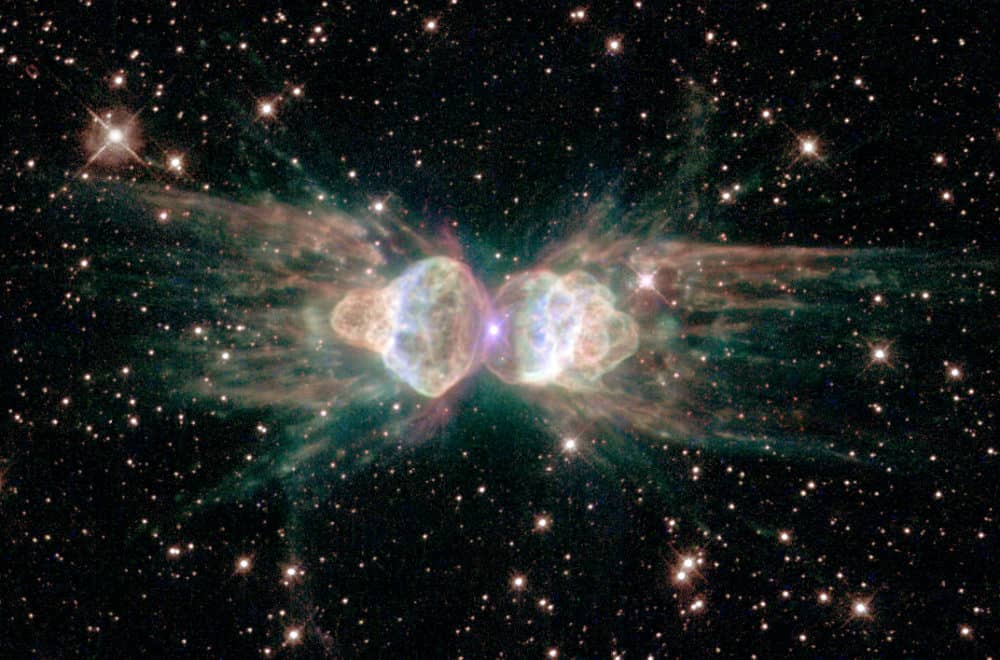The Cosmos with Mz3
Mz 3 (Menzel 3) is a young bipolar planetary nebula (PN) in the constellation Norma that is composed of a bright core and four distinct high-velocity outflows that have been named lobes, columns, rays, and chakram. These nebulosities are described as: two spherical bipolar lobes, two outer large filamentary hour-glass shaped columns, two cone shaped rays, and a planar radially expanding, elliptically shaped chakram. Mz 3 is a complex system composed of three nested pairs of bipolar lobes and an equatorial ellipse. Its lobes all share the same axis of symmetry but each have very different morphologies and opening angles. It is an unusual PN in that it is believed, by some researchers, to contain a symbiotic binary at its center. One study suggests that the dense nebular gas at its center may have originated from a source different from that of its extended lobes.The working model to explain this hypothesizes that this PN is composed of a giant companion that caused a central dense gas region to form, and a white dwarf that provides ionizing photons for the PN. Distance 8,000 ly
Mz 3 is often referred to as the Ant Nebula because it resembles the head and thorax of a garden-variety ant. Recently, the ESA’s Herschel Observatory spotted an infrared laser emission coming from the nebula’s core, which is remarkable, because these types of lasers can only be created under very specific conditions. In this case, the nebula would need a lot of dense gas packed in one area, close to the star. That’s a difficult proposition, because most white dwarfs push all their gas away from them. The answer, astronomers found, may be that there’s actually two stars inside the Ant Nebula.
